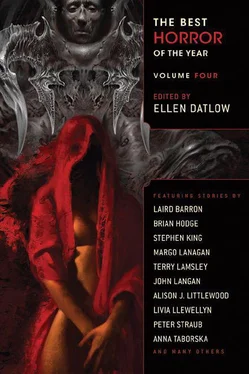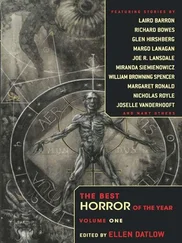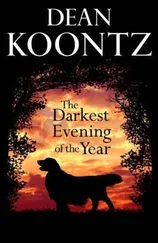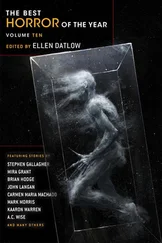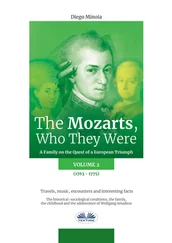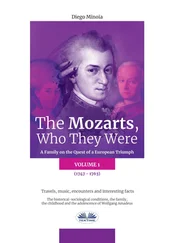The gang rides the funhouse ride. But it’s not just a funhouse, it’s a haunted house, a hall of mirrors, and tunnel of love all rolled into one. The cars crank along the track, but jerk to a stop in the first room, as if the ride is broken. They wander through the ride on foot. And this is where the movie gets weird.
It fragments. Time stops. (Do any two viewers see the same scene?) The camera follows scarred Elizabeth; it follows meathead Lance. It follows Carrie Linden. Voices whisper, words play backwards, things slide, half-glimpsed, across the corners of the film, at the very edges , spilling off the celluloid and into the dark. (Is it any wonder the movie house burned down?)
The funhouse is filled with painted flats and cheesy rubber monsters loaded on springs. But there are also angles that shouldn’t exist, reflections where there should be none.
There are odd, jerky cuts in the film itself, loops, backward stutters, and doubled scenes, as if bits of films are being run through a projector at the same time. It’s impossible.
Everyone is separated, utterly alone. The strange twists of the mirrored corridors keep them apart, even when they are only inches away. And here debates rage, because something happens, but no one is quite sure what.
Maybe Carrie Linden steps through a mirror into the room where Elizabeth is raking bloody nails against the glass, trying to escape. Some viewers claim that it isn’t really Carrie, because she stepped through a mirror too. (Inside the funhouse, is anyone who they used to be?) What follows is brutal. With eerie, cold precision Carrie tortures Elizabeth. Accounts vary. Is blood actually drawn, or is the pain more subtle, more insidious than that? (What did you see? What do you think you saw?)
What makes the violence even more shocking is that up until this point in the film, Carrie has been utterly passive. (Is it possible to watch her push a sliver of mirrored glass through Elizabeth’s cheek and not feel it in your own?) Elizabeth’s face fills with terror, but oddly, she doesn’t seem to notice Carrie at all. Her gaze darts to the mirrors. Her panicked glances skitter into the shadows.
She look straight at the camera, and tears roll silently from her eyes.
Four people leave the funhouse at the end of the scene — Carrie, Josh, Elizabeth and Lance. (Do they?) Mary is never seen again. Her absence is never explained. It’s that kind of film.
The crux of the movie hangs here. Kaleidophiles know if they could just unravel this scene, they’d understand everything. (Do they really want to?) When she leaves the funhouse, what is Carrie holding in her hand? Was there really a reflection in the mirror behind Elizabeth’s head? When Carrie leans down and puts her mouth against Elizabeth’s ear, what does she whisper?
“Can I help you?” The woman’s voice snaps Jackson back to himself. His skin flushes hot; panic constricts his throat.
The woman flickers and doubles. Carrie Linden (or Karen Finch) is here and now, but she is there and then too. Jackson shudders.
Something passes through the woman’s eyes, a kind of recognition. It’s as though all these years Jackson has been watching her, she’s been looking right back at him.
“You’re Carrie Linden,” he says. His voice is thick and far away.
Her expression turns hard. Jackson sees the cold impulse to violence; for a moment, she wants to hurt him. Instead, she steps aside, her voice tight. “You’d better come inside.”
Jackson squeezes past her, close enough to touch. He catches her scent — patchouli, stale cigarettes, and even staler coffee. Her posture radiates hatred; her bones are blades, aching towards his skin. When they are face to face, Jackson glimpses the truth in her eyes — she’s been expecting this moment. Carrie Linden has been running her whole life, knowing sooner or later someone will catch her.
She shuts the door — a final sound. Jackson’s heart skips, jitters erratically, worse than when he ran all the way here. Carrie gestures to a room opening up to the left.
“Sit. I’ll make coffee.”
She leaves him, disappearing down the narrow hall. Jackson lowers himself onto a futon covered with a tattered blanket. Upended apple crates flank it at either end. A coffee table sits between the futon and a nest-shaped chair. The walls are painted blood-rust red; they are utterly bare.
Carrie returns with mismatched mugs and hands him one. It’s spider-webbed with near-invisible cracks, the white ceramic stained beige around the rim. The side of the mug bears an incongruous rainbow, arching away from a fluffy white cloud. Jackson sips, and almost chokes. The coffee is scalding black; she doesn’t offer him milk or sugar.
Carrie Linden sits in the nest chair, tucking bare feet beneath her. She wears a chunky sweater coat. It looks hand-knit, and it nearly swallows her. She meets Jackson’s gaze, so he can’t possibly look away.
“Well, what do you want to know?” Her voice snaps, dry-stick brittle and hard.
Jackson can’t speak for his heart lodged in his throat. There’s a magic to watching Kaleidoscope (unless you watch it alone). The people on screen dying and fucking and screaming and weeping, they’re just shadows. It’s okay to watch; it’s safe. None of it is real.
Motes of dust fall through the light around Carrie Linden — tiny, erratic fireflies. The curtains are mostly drawn, but the sun knifes through, leaving the room blood hot.
“All of it,” Carries says, when Jackson can’t find the words.
“What?” He gapes, mouth wide.
“That’s what you’re wondering, isn’t it? That’s what they all want to know. The answer is — all of it. All of it was real.”
Jackson flinches as though he’s been punched in the gut. (In a way, he has.) Should he feel guiltier about the cracked light in her eyes, or the fact that his stomach dropped when she said “that’s what they all want to know”? He isn’t her first.
Carrie Linden’s hands wrap around her mug, showing blue veins and fragile bones. Steam rises, curling around her face. When she raises the mug to sip, her sleeve slides back defiantly and unapologetically revealing scars.
“Well?” Carrie’s gaze follows the line of Jackson’s sight. “Why did you come, then?”
She bores into him with piercing-bright eyes, and Jackson realizes — even sitting directly across from her — he can’t tell what color they are. They are every color and no color at once, as if her body is just a shell housing the infinite possibilities living inside.
“I wanted to talk about the movie. I thought maybe…” Jackson glances desperately around the bare-walled room — nowhere to run. In his head, he’s rehearsed this moment a thousand times. He’s always known exactly what he’ll say to Carrie Linden when he finally meets her, but now it’s all gone wrong.
I’m sorry, he wants to say, I shouldn’t have come, but the words stick in his throat. His eyes sting. He’s failed. In the end, he’s no better than Justin, or Kevin. He’s not a Kaleidophile, he hasn’t transcended the sex and gore — he’s just another wanna-be.
Unable to look Carrie in the eye, Jackson fumbles a postcard out of his coat pocket. The edges are frayed and velvet-soft through years of wear. It’s the original movie poster for Kaleidoscope , wrought in miniature. Jackson found it at a garage sale last year, and he’s been carrying it around ever since. He passes it to Carrie with shaking hands.
As Carrie looks down to study the card, Jackson finally looks up. Like the movie, Jackson knows the card by heart, but now he sees it through Carrie’s eyes; he’s never loathed himself more. His eyes burn with the lurid color, the jumbled images piled together and bleeding into one.
Читать дальше
